For this exercise, I tried out Leeds and York to find something I liked. There are lots of buildings everywhere of course, but Finding something I wanted to use proved a little tricker than I anticipated. My hometown of Leeds has developed so rapidly over the last ten years it’s hard to recognize much of anything of certain parts of the city centre.
It has a relatively small centre when compared with say Sheffield for example, and because of this there’s a trend to pushing higher rather than outwards. This has led to some exceptionally tall buildings recently, the tallest being a student accomodation called Altus house.
The oldest street in Leeds is Kirkgate, this was one of the first places I thought would make a good subject as it`s going through a renaissance with a newly revived cloth market facelift, but this didn’t look great really so I decided against that.
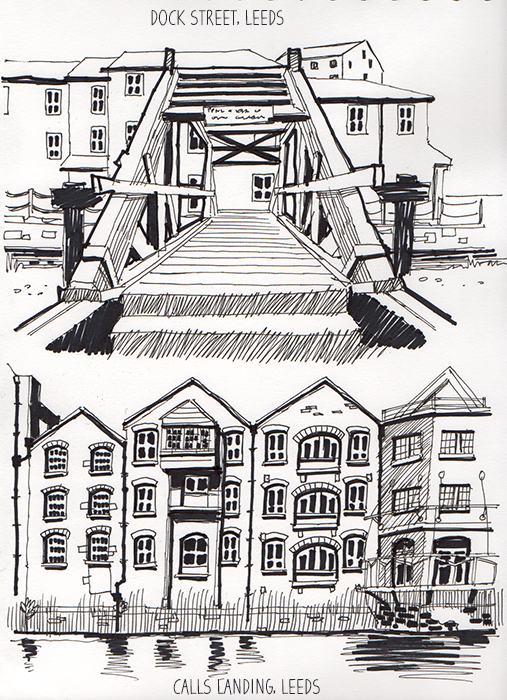
I had a walk down by the Royal Armouries museum along the river Aire which runs through the city centre. There are some interesting wharfe and mill buildings down here from the industrial revolution, all modernised and gentrified these days into trendy wine bars and expensive riverside accommodations. As with most cities, this stretch of river used to be dead from pollution : these days however it’s so clean the environment agency installed a fish run for migratory species to spawn up river, and there’s even a resident Heron sitting on the weir, always a good sign on a river!
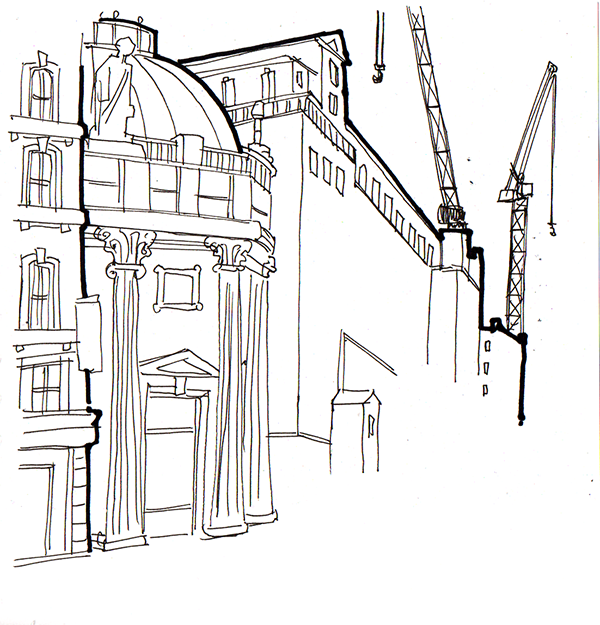
I had a bit more of a walk around away from the riverside and more into the City centre to see if there was anything with any interesting contrast. I managed to get a quickish sketch of this view down Boar Lane which leads to the Queen’s Hotel in City square. I somehow managed to mess up the perspective on this, but did wonder if there was a nice contrast between old, more recent and new by way of the regency style foreground, neoclassical, deco and modern construction.
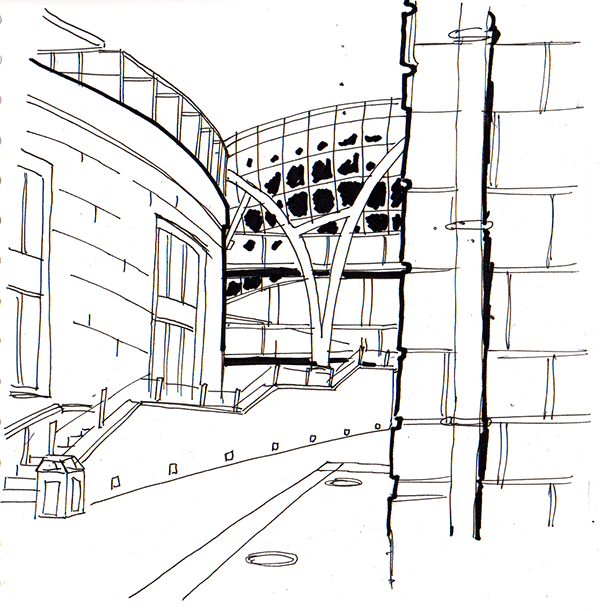
On the same side of this road is the Trinity shopping centre, a bit of an odd shopping mall. The name comes from the grade II listed Holy Trinity church next to which it’s situated. It’s odd in the respect that it was predicted to become a white elephant where shoppers were concerned and wasn’t really destined for such great things. It’s defied the odds though and is constantly packed with shoppers. It’s an interesting a sophisticated design featuring a huge glass dome with two levels and a large covered gallery on the rear leading out onto the intersection of arguably the busiest shopping area in the centre. A magnificent pack horse sculpture, Equus Altus by Scottish artist Andy Scott sits in the centre of the mall and represents the Wool and textile industry of Leeds past.
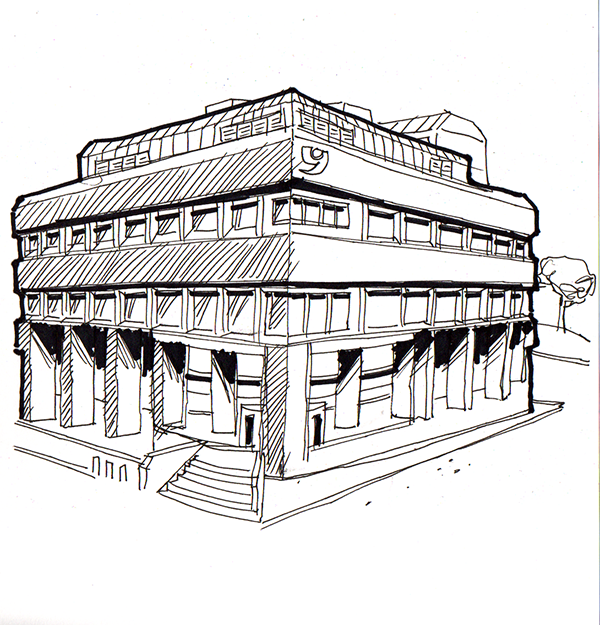
I was struggling a little by this point to find something I wanted to tackle as a subject, surprising given the variety of architecture around the city centre. There was the Kirkgate Market building which would make for a great study, but it would take much longer than the time I had to do it justice. I made my way back to the car park in the merrion centre, feeling slightly annoyed with myself for not being able to get something a bit more useful from this outing. As I was parked on the 4th floor in the multi storey, I managed to get this nice view of the Yorkshire Bank head office across the street.
I’ve only ever been in the building once, and that was when i was 14 at middle school : I came runner up in the Yorkshire Bank painting competition and went there to receive a cheque for £25, £50 for the school and my picture framing. It was a posh affair and my mum, aunt and art teacher came along. I got to meet watercolour artist Ashley Jackson as well, and I had an awkward photo taken!
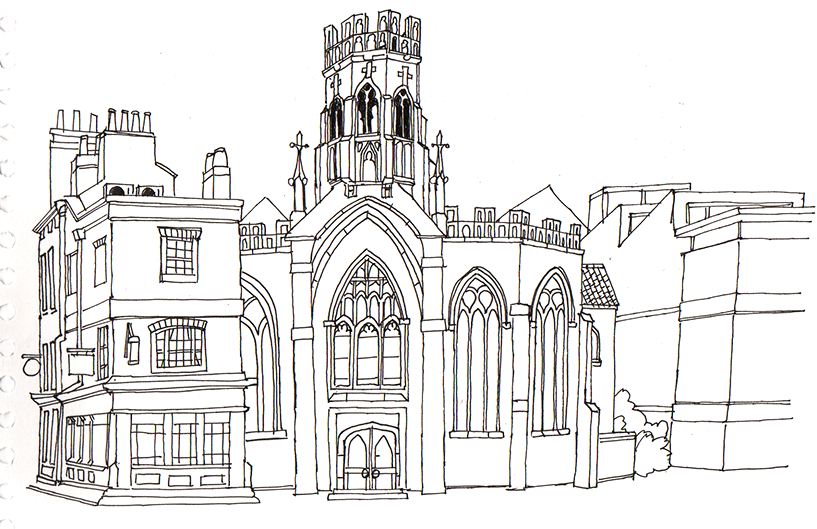
The next day, realising I was running out of time for this particular exercise, I accompanied the family to York for a small shopping expedition and walk around and managed to sketch this view of St. Helen’s Church on Stonegate. Like most buildings in any historic city, york has old and new nestled next to each other at practically every turn.
In this particular aspect from St.Helen’s square, the buildings on the left are 15th century with 16th and 17th century amendments. Stonegate which continues down the left hand side here is on Roman Castrum line which marked the boundary of Eboracum, which became modern york from the Roman settlement (castra or caister is a Roman fort built on a river, so wherever you see a caster in a place name, that’s what it’s derived from : our nearest one is Tadcaster).
The Church of St. Helen’s dates to the 15th century, but was partly demolished after falling derelict. The church was partly rebuilt during the Victorian era, and this is the more modern looking gothic revival styled frontage. The much older tower can be seen in the centre.
To the right is the Superdry store on Davygate with modern apartments crammed in behind this. Rents will be reassuringly eye-watering there, as are house and property values anywhere in the city.
The history of York is fascinating and deep, I’ve always had an interest in Roman history and York has much to explore in this respect, the empire left it’s mark everywhere in this city : there’s a nicely preserved Roman bathhouse underneath the Roman Bath pub, built by the legendary ninth Legion (the same soldiers that supposedly went missing after a doomed campaign into Caledonia to retrieve the stolen eagle from the Legion standard).
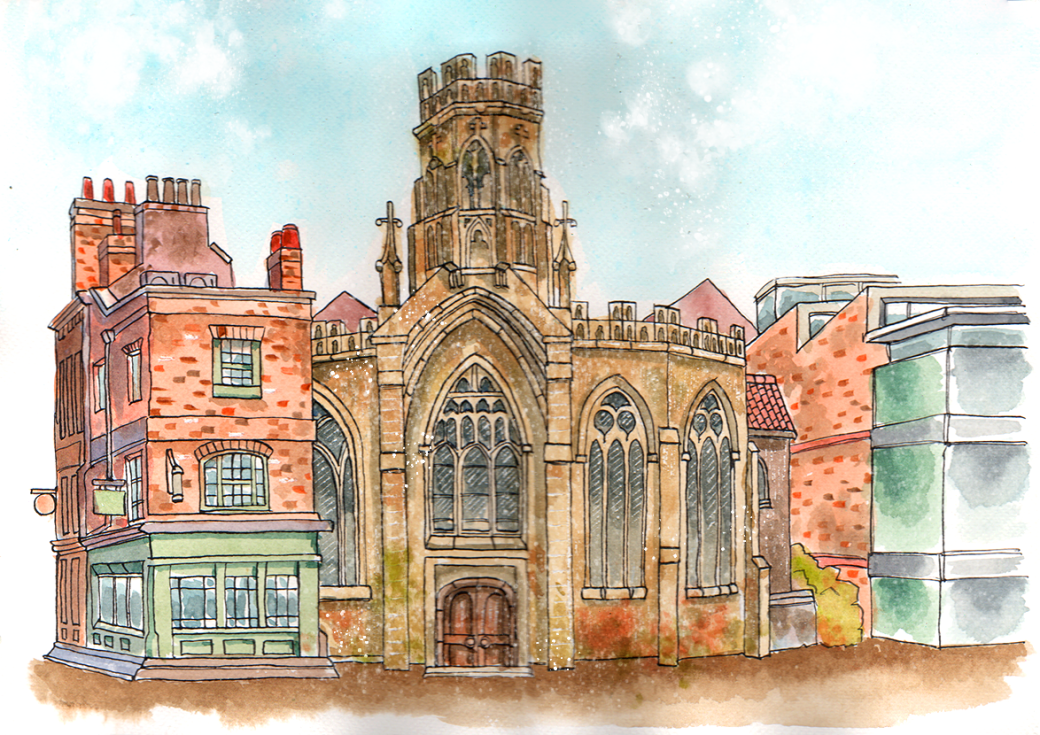
Before leaving for the day, I took a reference photo for colours then took a look at the sketch when I returned. The original was landscape in an A4 sketchbook, so to make things easier to paint with watercolour I enlarged to A3 from a scan then created a tracing which I could transfer to a sheet of stretched watercolour paper. I then used a dip pen with indian ink and drew out the buildings. When this was dry, i painted wet in wet for the larger areas of colour, then added some salt to the sky and church. I added in some of the detail areas with further colour, then used a scalpel to scratch away parts of the church facade.
Conclusion
I enjoy drawing buildings just about as much as I do people, although when I sketch them I’m less concerned with accuracy when it comes to perspective and like most other artists, i wing it to sacrifice for speed. I tend to think as long as it’s convincing enough most of the time it doesn’t detract too much and often adds a nice charm to sketches in particular.
The challenge with this exercise was trying to impart some visual contrast through colour and texture to differentiate the ages between the structures, and in that respect I’m not convinced I managed to pull that off well enough. I think some of this is down to my inexperience with watercolour as a medium. I love how you can treat watercolours in different ways to achieve textural effects and i’m relatively new to this so still on a learning curve. I could augment the hell out of this digitally, but to be honest I would rather not and gain some virtuosity (perhaps too strong a word) with a natural medium for these types of studies if i can.
I need to try out coloured pencil here too, I must have the worst set in the world which has so far put me off using them even though i hear great things from other artists who use them alongside watercolours as a dry medium.